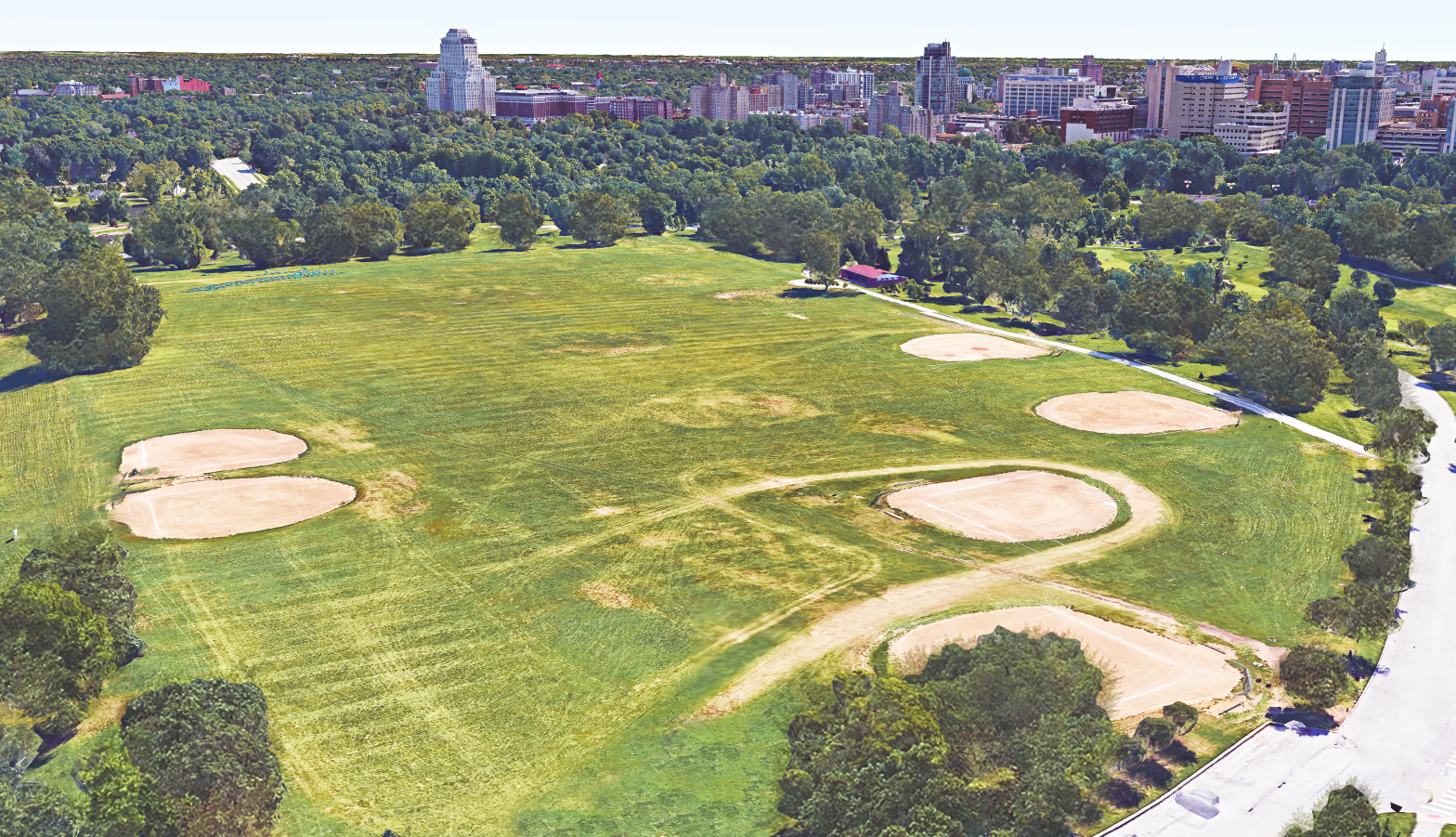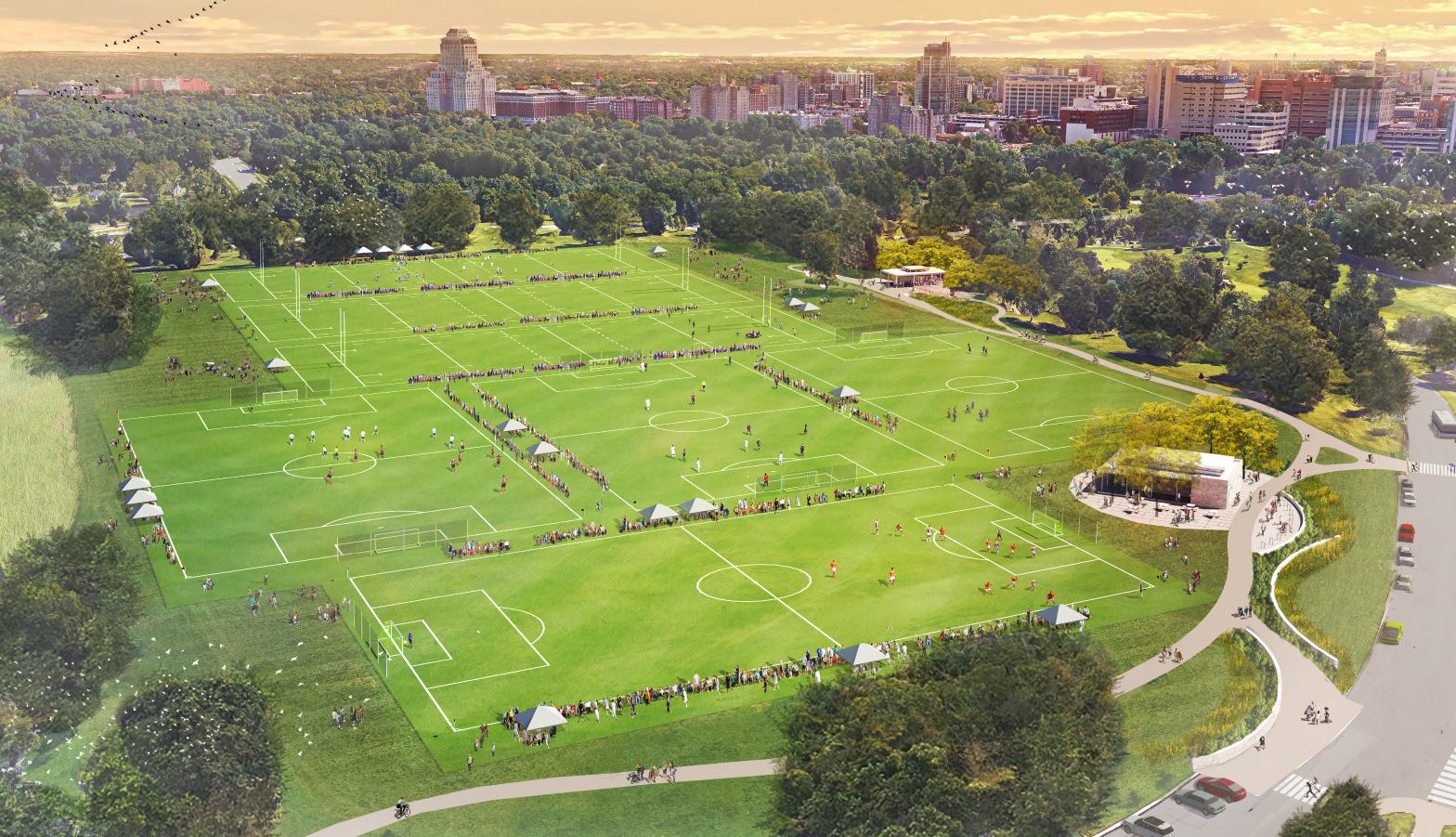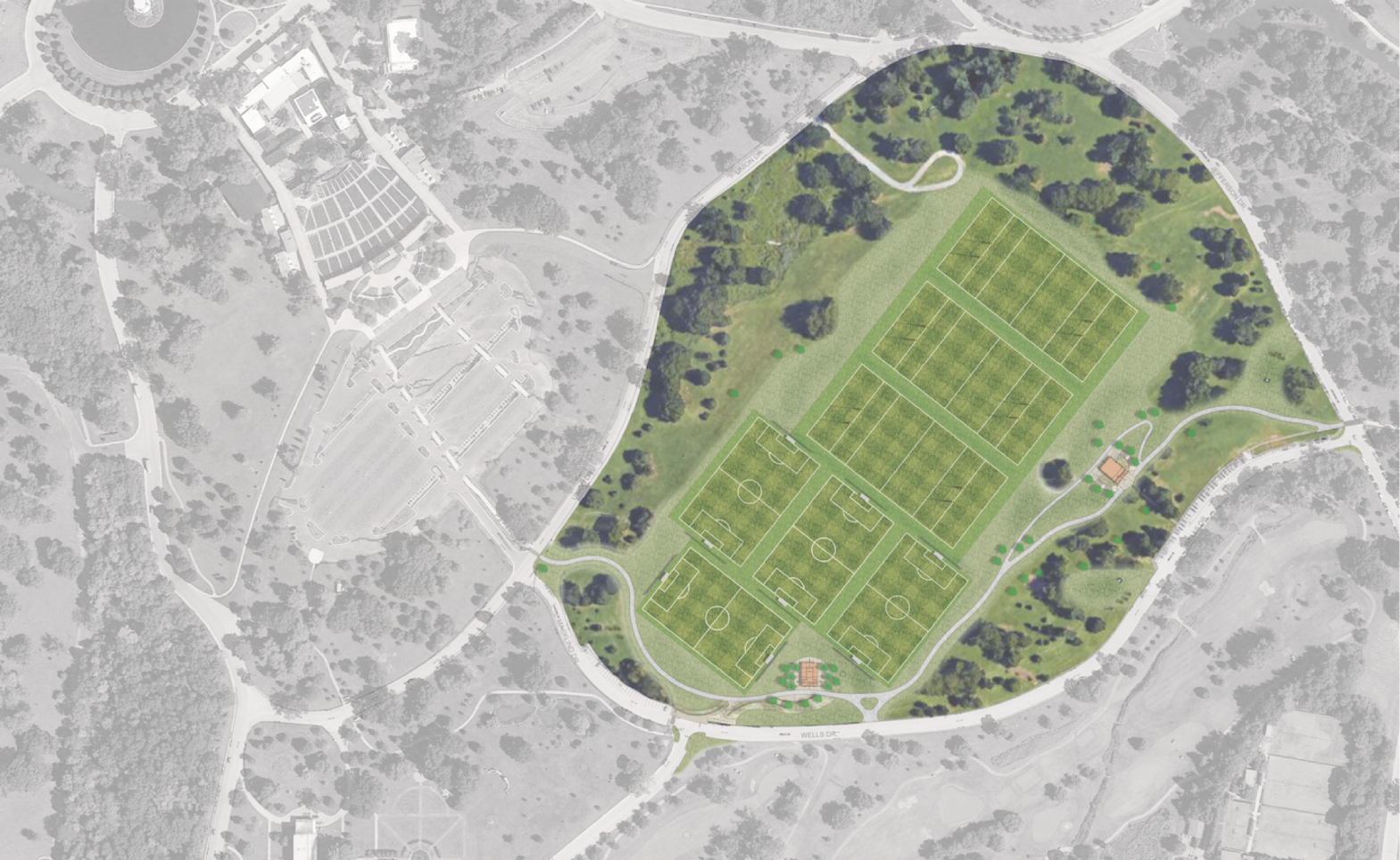Technology and Nature Working Together in Forest Park
Technology and nature seem to be constantly at odds. They tell you to put down your phone and go outside for some fresh air. Turn off your laptop and go to the park. What if they worked together? Technology bringing you closer to nature; nature driving you back to technology to educate yourself about the natural landscape you are immersed in. That dream is a reality at Forest Park. Whether you’re walking among newly landscaped flower beds and green spaces, or rushing down the left sideline in a rugby match—cutting edge technology is literally beneath your feet.
Fiber Enforced Soil
I was recently honored to speak with some of the amazing people who work at ForestParkForever.org about the technology that keeps the jewel of St. Louis beautiful. While speaking with Frank Kartmann, Senior Vice President of Park Operations, I was given a crash master class on fiber soils and how they are supporting Forest Park and us visitors.
“We introduce into the soil synthetic fibers that are about an inch in length. They look like sewing thread. They provide additional tensile strength to the soil and make the soil more robust.” In lay terms, he asked me to think about soccer or rugby—when a player plants a foot to change direction, the soil pulls apart at the point of impact. The fibers act like rebar in concrete, working with the soil to keep it from pulling apart and increasing its overall strength.
This technology is not new to the St. Louis area. It’s currently used at locations such as “SLU’s athletic fields, the Rams former practice fields, St. Mary’s baseball fields, the St. Louis Arch grounds, Soldier’s Memorial, Keener Plaza, the list goes on.” Mr. Kartmann explained why Forest Park’s Central Fields were the first place this fiber enforced soil was introduced in the park. In collaboration SWT landscape designers, they created the plan for the fiber soil’s use in the fields. “We realized this is a big investment. And this is going to be a premier site for rugby and soccer and these large events. We want to ensure these fields remain robust. It helps with large events. Central fields will not only be a space for rugby and soccer, but also for Loufest, and the Balloon Glow and Race. These are events where there are lots of people in a concentrated area, along with trucks and large equipment. They all have impact on the soil and want to tear it.”
Not only do these fibers benefit the short-term use and turnaround of a site, but, “We should have the ability to reduce our maintenance expenses. Not only after events, but day to day use from rugby and soccer. The rate of the recovery of the fields should be faster.”
Now let’s nerd out for a minute on these fibers. How do these things actually do what Mr. Kartmann is telling us? Here are the specs. They have the tensile strength of 40,000 lbs per square inch. By comparison, steel has 36,000 to 50,000 lbs per square inch.
How is it added to the existing soil? The landscapers create a grid and then introduce about one pound of fibers per square. They spread the individual fibers evenly and till them in to a depth of 6-10 inches. This helps the soil be usable longer without “large infusions of maintenance investment. The goal is to get the fields recovered and get them back to use as quickly as possible.”



Innovative Irrigation
Luckily Mr. Kartmann was willing to stick around for a bit longer because, selfishly, I had that had always perplexed me. During every run in or trip to Forest Park I’ve ever taken I’ve wondered, how do they keep the place so green without blowing every bit of cash on water and grounds keeping? Mr. Kartmann had an answer ready and he was excited.
He told me all about Innovative Irrigation and its introduction to Forest Park. He gave special thanks and gratitude to the dedicated employees of Forest Park Forever and the parks department, who share the duties of park upkeep.
“We are trying to be as green as possible in the irrigation of the green spaces.” The first section of the park to be infused with the cutting-edge irrigation technology are the green spaces on either side of North Debaliviere across from the History Museum.
“We took advantage of that new project to think about irrigation and how we could do that more efficiently. Normal irrigation systems are installed and set to come on at certain times on certain days, whether you need them to or not. The new irrigation system has moisture sensors that are installed with the irrigation piping heads that are sending messages back to the controller. It tells the system whether or not to override the program. If it’s moist enough it will tell it not to come on.” Basically, you will never see sprinklers on when it’s raining. In addition, the system can be monitored remotely. If you see there is a leak you can shut it down from anywhere instead of sending someone out. Before this installation you’d have to wander upon a busted pipe or see a spike in usage on a water bill.
Another fascinating aspect of this smart irrigation system is that “It’s also zoned. So, you’re not telling the entire site to shut down or the entire site to operate. If the top of the hill needs water, but the bottom does not, then you can just water the top. It allows you to be very prescriptive.”
As more and more spaces get updated and new landscaping goes in, so will this new smart irrigation system. The goal is to eventually have the entire park on a grid system using smart irrigation.
ForestParkMap.org
So, how do we get from how everything works to where everything is? Forest Park is 1,300 acres of lakes, fountains, fields, ball parks, archery ranges, golf courses, museums and the world-famous St. Louis Zoo—and that’s just a short list. I have spent thousands of hours of my life in Forest Park, and after speaking with Stephen Schenkenberg and Katy Peace of Forest Park Forever, I quickly realized I was a novice. The tool that now tethers tech to nature is ForestParkMap.org. It’s a platform agnostic site that allows any user, tablet, smartphone, laptop or desk top, to plan a trip or simply orient themselves while in the park.
I asked Stephen Schenkenberg what drove the creation of this site. “People are continually turned around and lost in a 1300-acre park. The park was originally designed to get lost in. People would come with their carriages and explore. Now we know that better orientation is important to our visitors. It is always one of the top 2-3 requests that visitors give us—better maps and orientation. But, we were looking for ways beyond the [physical and printed] maps for the visitor to orient him or herself, and also explore more of the park.” He stated that the interactive map is “a new way to arm visitors with a great deal of information about the park.”
The creation of this map began in November of 2014. It was intentionally designed to be a website, not an app, so that it would work across all devices and be easily updated. Based on the numbers gathered by ForestParkForever.org, 43% of users use it on their desktops a way to plan their visit.
Please, go to this site. It is amazing. Every question you’ve asked yourself about the park from where is the Boat House, to where is the nearest bathroom, to what in the heck is that statue—the answer is in the map. My suggestion: bookmark the site to the home screen on your phone and ta-dah, it’s always just one click away.
The site is jam-packed with content. There are pictures and locations of every bathroom, restaurant, and parking lot. Every pavilion was also photographed so you can see what the spot of your next family reunion will look like without having to drive in from out-of-town. And thanks to the help of their forest park neighbors like the Muny, golf courses, and museums—Forest Park Forever got all the information needed keep the map as up to date and interactive as possible. As Katy Peace stated “this is not a static project. We will continue to tweak and update and add to it.”
A Teaching and Adventure Tool
More than finding yourself or planning a trip, this map has an endless amount of uses. Are your kids or students addicted to screens? Use this map to marry their love of tech with an exploration of nature and history. Go through the map and its content to create scavenger hunts or geocaching competitions. You can use it to supplement projects and reports for summer camps, nature classes, or history classes. The map can be a tool for families to plan an entire day in a park with endless possibilities.
Katy Peace describes the awesome ability of the map in being “GPS enabled. The site finds you and can direct you to any site you want to find! Pick what you want to find and the map will update and show you what you want to see.” You don’t have to Google the Muny or the Zoo or the Boathouse; you just go to the map and everything is housed in one user friendly location. Ms. Peace summed the park up perfectly, “Forest park is a choose your own adventure and we are trying to facilitate that adventure and what it means to different people. Everybody wants their experience in Forest Park to be their own.”
ListenForestPark.org
Are you reading this article far away from St. Louis? Are you missing home and missing the park? Well, the wonderful folks are Forest Park Forever are thinking about you. Listenforestpark.org is a microsite that houses high fidelity recordings of different locations in Forest Park. Schenkenberg says that if you “want to use sounds of the park to put your infant to sleep, or if there are folks who just miss the park and what the Grand Basin sounds like, you can use this site as your very own Forest Park white noise app.” No matter where you are on this big blue ball called Earth, you can fall asleep to the sounds of the park. And as a native St. Louis boy, that is a comforting thought.
For all the information you could ever want about Forest Park, head to www.ForestParkForever.org. If you’re lost in the park now, or plan on getting lost in the future, bookmark www.ForestParkMap.org and get ready for an adventure.



